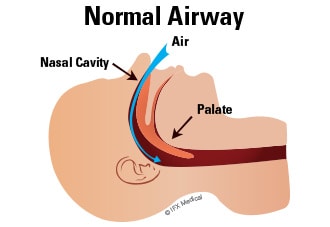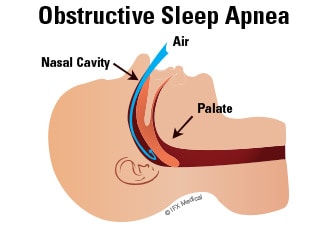Disrupted sleep patterns can interfere with many aspects of your life. Your ability to think clearly, your energy levels and even aspects of your physical and mental health are affected by missed hours of sleep. Sleeping disorders interfere with your quality of sleep, either by causing you to wake during the night, preventing you from experiencing quality deep sleep, or by preventing you from sleeping at all.
Obstructive sleep apnea is especially common among people who are overweight. Men are more likely to develop the condition than women, but anyone may develop the disease. An estimated 90 percent of sleep apnea cases are undiagnosed, which indicates that there are many people who are experiencing poor quality sleep without a clear understanding as to why.
What is Sleep Apnea?
Sleep apnea is one of the most common forms of sleep disorders. It develops when breathing stops sporadically throughout the night. These lapses in breathing may last from several seconds to a minute or more, and may occur as often as 30 times an hour.
In a healthy person, air can flow freely towards the lungs without obstruction. Obstructive sleep apnea develops when muscles and tissues in the throat prevent air from reaching the lungs. This often develops as a result of fat buildup around the neck.

Symptoms of Sleep Apnea
Sleep apnea causes brief lapses in breathing that will disrupt your quality of sleep. However, it is not common for the person who has sleep apnea to fully wake during these lapses. For this reason, it is often a spouse or close family member who will notice severe snoring and sleep disruptions throughout the night.
Even though you may not wake up, the breathing lapses will prevent you from gaining quality rest. You may feel excessively tired and sluggish the next day as a result. Obstructive sleep apnea is the leading cause for excessive daytime sleepiness.

Common symptoms of sleep apnea include:
- Severe and chronic snoring
- Morning headaches
- Sore throat, especially in the morning
- Extreme fatigue
- Difficulty concentrating
Diagnosis and Treatment for Sleep Apnea
Sleep apnea is diagnosed by your physician after a thorough review of your symptoms and medical history. To confirm diagnosis and sleep-study may be required.
Sleep apnea is treated through a collection of lifestyle changes, therapy and in severe cases surgery. The goal of sleep apnea treatment is to improve sleep quality and reduce the incidence of breathing obstruction. The most common form of treatment for sleep apnea is the use of a continuous positive airway pressure device, or C-PAP. This device is connected to a face mask that is worn during sleep. It directs a gentle stream of air through the nose and mouth, causing the airway to remain open and allowing air to freely pass into the lungs.
For people who are overweight or obese, losing weight will often improve sleep quality and reduce the symptoms of sleep apnea. Many people who undergo weight loss surgery experience complete relief from sleep apnea symptoms.
Suggested Reading
Sleep better to lose weight after weight loss surgery
Bariatric Surgery Benefits Older Adults
Sleep Better after Weight Loss Surgery
Also In This Section
- Bariatric Surgery May Restore Monthly Cycles in Obese Women
- Bariatric Surgery May Prevent Heart-Related Incidents
- For Diabetes, Surgery a Better Option than Standard Treatment
- Help Cholesterol by Losing Weight
- Speaking With Your Physician May Enhance Your Weight Loss Efforts
- Improve Migraines with Weight Loss Surgery
- Flu Shot Less Effective for the Obese
- Benefits of Weight Loss before Bariatric Surgery
- Keep Up with Weight Loss
- Warm Up Your Body Even In Cold Weather
- Life after Weight Loss Surgery
- Health Risks Associated with Obesity
- Ten Reasons You Should Lose Weight
- Bariatric Surgery Can Help You to Fight Obesity
- How to Begin Exercising After Gastric Bypass Surgery
- New Risk Calculator Assists Patients Considering Bariatric Surgery

